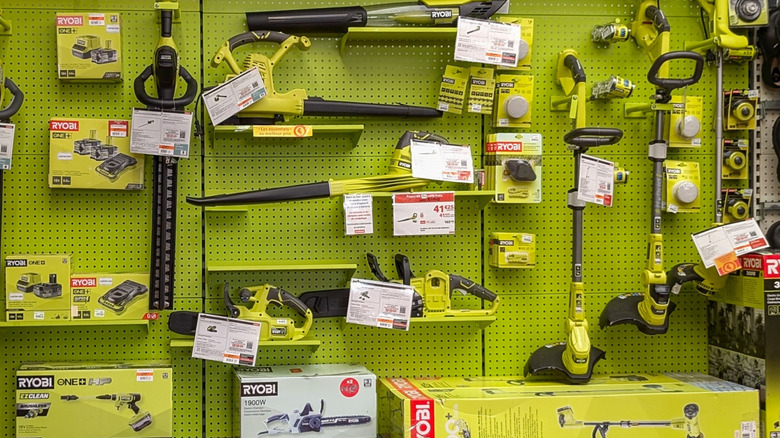What The Orange Light Means On A Ryobi Battery Charger
We may receive a commission on purchases made from links.
Your battery charger is a pretty complicated tool, and troubleshooting it can be a challenge. Fortunately, manufacturers tend to build in some kind of trouble indicator. For instance, there's a series of lights on your Ryobi battery charger that will help determine a fault with the battery.
So with all those flashing lights, what does it mean if it's orange? First off, it means you've got a very specific charger. Most Ryobis just use rows of single-colored lights that flash or stay lit to indicate a fault. The only Ryobi charger we could find with an orange trouble light is the Ryobi ONE+ 18V 6-Port Supercharger, which the maker touts can charge up to six 18V ONE+ batteries at once, and 30% faster than a standard charger. And if you see that orange flashing light? That means there's a temperature problem with one of your batteries, and you'll need to wait for the battery temperature to normalize.
How to fix orange flashing light on Ryobi ONE+ 18V 6-Port Supercharger
According to Ryobi's support site, the flashing orange light specifically means "Temperature Delay". It doesn't necessarily mean your battery is bad, but it is outside of the battery's operating temperature. Because of this, it won't begin charging until the battery reaches a cooler or warmer temperature.
There's no status that differentiates between "hot battery pack" and "cold battery pack", but they're both common states. Your battery may be hot if it was recently in use. If you pushed your tool too hard, the tool and its attached battery could overheat. On the flip side, if you're in a more frigid climate, the battery could be too cold, meaning it's not optimal to recharge it. The colder temperature increases the resistance of the battery cell, so it's harder to charge, and you risk damaging the battery.
Unfortunately, all you can really do in either instance is let the battery temperature normalize, allowing it to either cool or warm up on its own. However, once the battery reaches a normal temperature, it should automatically begin charging, getting you set up for your next round of home DIY projects.

